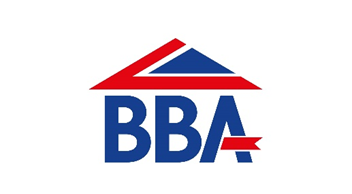Masterframe Windows Ltd, founded in 1988, is an established UK manufacturer of bespoke, high-quality PVC-U sash windows. The company has maintained a 27-year relationship with the British Board of Agrément (BBA). Masterframe first sought third party certification from the BBA in 1997 and obtained Agrément certification for its windows. Since then, the company has worked with the BBA to ensure conformity, consistency and that their unique and patented sash window frames meet high-quality standards. Following the initial certification in 1997, Masterframe has maintained its Agrément Certificate to uphold these high standards, even as the company introduces product lifecycle changes, innovations, and process updates. To ensure compliance and quality, as part of the Agrément maintenance process, Masterframe receives two visits from the BBA to its premises per year for, audits and inspections. As a result, the company and its employees have maintained a strong focus on quality in their manufacturing processes, delivery and installation of their products for its high-end customer base and its expectations. The Masterframe PVC-U sash windows provide a unique alternative to traditional timber frames, offering a traditional look and feel while delivering all the benefits of a modern system. All the window frames are designed in-house and feature unique and patented technology. The Masterframe windows feature putty-line finishes, deep sills, vacuum glazing with 10mm cavity units. Although the glazing appears single glazed, it has a 1.2u value and includes all the benefits of double-glazing. The window frames look unobtrusive and offer sound proofing benefits. Carol Slade, Managing Director for Masterframe Windows Ltd, who works closely with the BBA team explained, “We recognise that the industry needs third party certification, it provides valuable assurance and trust to our customer base that what they are buying, performs as we claim. Certification can be perceived as being expensive and time-consuming, but we are committed to quality and want to maintain our standards within the market, so we see it as an important investment. We also recognise that BBA certification enhances our credibility when tendering for large commercial contracts.” The BBA Maintenance Process The team at Masterframe began the Certification process with the BBA in 1997, seeking third-party certification and testing. Masterframe chose the BBA due to their rigorous testing procedures, high standards and recognition within the industry. With expert guidance and advice on best practice, the team has worked with the BBA for many years to maintain and substantiate their claims to help demonstrate confidence in their products and assure their customers. Throughout Masterframe’s long relationship with the BBA their Technical and Compliance Director, Ray Rabett, who has been with the company for some 30 years, has continuously developed and introduced new innovative elements to the frames. These enhancements include improved aesthetics, increased longevity, and upgraded thermal performance and dimensional specifications to meet the evolving demands of their loyal customer base and changing market trends. As part of the BBA Agrément Certificate maintenance process, Masterframe’s Agrément Certificate is reviewed and updated in-line with these changes. The BBA maintenance process also ensures that Masterframe is aware of any new standards and changes in legislation, and that their products remain fit-for-purpose when things change. Ray Rabett added, “The process ensures all elements of our windows remain fit for purpose, even down to the screws being tested for conformance to the original quality plan. Our welding temperatures and tolerances are tested, checked, and scrutinized in great detail. We are 100% committed to both product and service excellence and remain completely focused on ensuring that customers receive products that exceed their expectations and are built to last. By submitting to this regular third-party testing by a well-renowned organization, we are, in a sense, offering a concrete guarantee of this ongoing commitment.” Quality, Credibility and Customer Confidence The BBA Agreement Certificate and its process clearly demonstrates that Masterframe windows continue to meet UK building regulations and have been assessed and tested to provide durability for the lifetime of each window frame they produce, provided they have been installed and maintained in accordance with the details contained in the certificate. By maintaining Certification in line with the BBA’s guidelines, Masterframe Windows Ltd has greater insight into changing industry regulations to ensure quality, credibility and customer confidence. Carol further added, “Working with the BBA has enhanced our company and employee mindset to continually strive for excellence without compromising on quality. We would highly recommend the BBA to others if they want to assure their customers that their product performs as claimed.” To learn more about Masterframe Sash Windows, go to https://www.masterframe.co.uk/ or the BBA Agrément Certification process – visit https://www.bbacerts.co.uk/ Building, Design & Construction Magazine | The Choice of Industry Professionals














